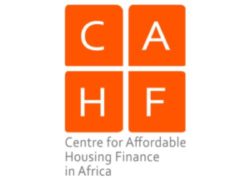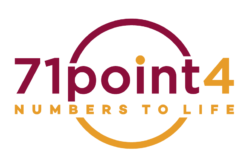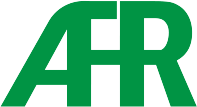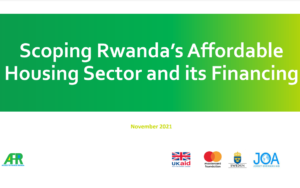Rwanda - Market Shaping Indicators
To address issues of information asymmetry, Access to Finance Rwanda (AFR), commissioned the Centre for Affordable Housing Finance in Africa (CAHF) and data consultancy 71point4 to undertake a study on Rwanda’s affordable housing sector and its financing. Through use of the Market Shaping Indicators, developed in partnership with Reall, the data explores the institutional environment for affordable housing and interrogates the capacity and activities of the demand and supply sides. Together with the Rwanda yearbook profile, the MSIs provide an important input into the broader Data Agenda work in Rwanda – identifying key gaps in housing market data that would help create a better understanding of the housing ecosystem, for more targeted interventions and policy. Further details on this work can be found on the AFR website.
Country Overview
The housing and construction sector is integral to Rwanda’s economy, contributing 10% towards Rwanda’s GDP . Resultingly COVID-19, which saw Rwanda’s economy decline by an average of 4.1% in the first half of 2020, proved also devastating for the real estate sector and associated supply chains. Since late 2020 this has steadily started to recover, and easing access to both housing finance and capital markets for affordable housing has become a major priority for the Government of Rwanda.
Access to housing finance remains a key challenge for affordable housing markets in Rwanda. Demand for affordable housing will continue to increase with the percentage of Rwanda’s population living in urban areas expected to rise to 35% by 2024 from 18% in 2021. To meet this projected urbanisation a package of both good quality sustainable housing and finance must be offered that explicitly responds to actual household affordability, meeting the needs of households at the bottom end of the pyramid who are currently unable to afford the products on offer.
State of Housing Data
Rwanda has a rich administrative data landscape that can offer valuable insights on the state of the housing market. Overall data was found for a total of 96 out of the 114 Market Shaping Indicators (84% of all indicators) along several aggregations. Areas for improvement were identified, notably to work with the Rwanda Housing Authority, Rwanda Land Management and Use Authority, National Bank of Rwanda and Rwanda Development Board to improve the quality and metrics of supply-side, demand-side and housing transactions data.
Rwanda’s existing work in digitisation stands the affordable housing sector in good stead, providing opportunities for demonstrating credit worthiness and bringing efficiencies into supply chains. Furthering this to digitise income streams and construction payments will help to improve visibility of cash flows and enable growth to scale.
Text on this page is based on the MSI Rwanda Country Profile, drawn from Centre for Affordable Housing Finance (2021). Housing Finance in Africa Yearbook: 12th Edition 2021, with additional content from Access to Finance Rwanda.
Read the full report: Scoping
Rwanda’s Affordable Housing
Sector and its Financing, on
AFR’s website
Key Indicators
1. Land & Infrastructure
% of urban bottom 40 households without access to basic sanitation services
| Country | Year | Data Source | Value |
|---|---|---|---|
| Cote d'Ivoire | 2012 | DHS | 96.5% |
| Ghana | 2014 | DHS | 93.15% |
| Kenya | 2014 | DHS | 88.25% |
| Morocco | 2004 | DHS | 52.05% |
| Mozambique | 2011 | DHS | 95.6% |
| Nigeria | 2018 | DHS | 83.1% |
| Tanzania | 2017 | DHS | 37% |
| Uganda | 2016 | DHS | 94.5% |
| Rwanda | 2016 | National Institute of Statistics Rwanda (NISR) | 13.13% |
| Pakistan | 2018 | The DHS Program | 2.75% |
| India | 2018 | NSSO 76th Round | 0.2% |
2. Construction & Investment
% of urban population living in slums, informal settlements, or inadequate dwellings
| Country | Year | Data Source | Value |
|---|---|---|---|
| Cote d'Ivoire | N/A | ||
| Ghana | N/A | ||
| Kenya | N/A | ||
| Morocco | N/A | ||
| Mozambique | N/A | ||
| Nigeria | N/A | ||
| Tanzania | N/A | ||
| Uganda | N/A | ||
| Rwanda | 2018 | World Bank | 42.1% |
| Pakistan | N/A | ||
| India | 2018 | NSSO 76th Round | 35% |
3. Sales & Rental
Number of residential mortgages outstanding
| Country | Year | Data Source | Value |
|---|---|---|---|
| Kenya | 2019 | Central Bank of Kenya | 27,993 |
| Nigeria | 2019 | NMRC | 32,260 |
| Tanzania | 2019 | Bank of Tanzania and Tanzania Mortgage Refinance Company Limited | 5,460 |
| Rwanda | 2020 | National Bank of Rwanda (NBR) | 44,177 |
| Pakistan | 2019 | State Bank of Pakistan - Housing Finance Data Review | 58,620 |
| India | 2020 | Reserve Bank of India | 9,817,180 |
3. Sales & Rental
Price of the cheapest, newly built dwelling by a formal developer or contractor
| Country | Year | Data Source | Value |
|---|---|---|---|
| Cote d'Ivoire | 2018 | Site d'annonce et promotion dans l'immobilier en Côte d'Ivoire | 15,500,000 CFA$27,087.48 |
| Ghana | 2019 | Damax Construction Co. Ltd | 108,704 GH₵$19,621.66 |
| Kenya | 2019 | Tsavo Real Estate | 4,000,000 Ksh$37,037.04 |
| Morocco | 2019 | Various real estate websites | 250,000 DH$27,027.03 |
| Mozambique | 2016 | Casa Minha | 3,418,491 MZ$48,147.76 |
| Nigeria | 2019 | Millard Fuller Foundation; Shelter Origins | 2,900,000 NGN$7,651.72 |
| Tanzania | 2018 | CAHF | 37,966,107 TZS$16,508.58 |
| Uganda | 2019 | Various property developers | 125,000,000 UGX$34,097.11 |
| Rwanda | 2020 | Marchal Real Estate Developers | 10,000,000 R₣$11,119.14 |
| Pakistan | 2021 | Partners | 2,500,000 PKR$14,305.33 |
| India | 2022 | Real estate websites and industry experts | 160,000 IN₹$2,176.87 |
3. Sales & Rental
% of national households that rent their dwelling
| Country | Year | Data Source | Value |
|---|---|---|---|
| Ghana | 2017 | Ghana Statistical Service | 28% |
| Kenya | 2019 | Central Bank of Kenya, Kenya National Bureau of Statistics, FSD Kenya | 35.01% |
| Morocco | 2014 | High Commission for Planning; World Bank | 18.5% |
| Nigeria | 2018 | World Bank; Nigeria National Bureau of Statistics | 21.8% |
| Tanzania | 2017 | National Bureau of Statistics | 80.56% |
| Uganda | 2016 | DHS | 53.45% |
| Rwanda | 2020 | Access to Finance Rwanda (AFR) and National Institute of Statistics Rwanda (NISR) | 8.94% |
| Pakistan | 2017 | Population and Housing Census | 11.53% |
| India | 2018 | NSSO 76th Round | 13% |
5. Enabling Environment
Ease of Doing Business Index Rank: Global
| Country | Year | Data Source | Value |
|---|---|---|---|
| Cote d'Ivoire | 2020 | World Bank | 110 |
| Ghana | 2020 | World Bank | 118 |
| Kenya | 2019 | World Bank Ease of Doing Business | 61 |
| Morocco | 2020 | World Bank | 53 |
| Mozambique | 2019 | World Bank | 74 |
| Nigeria | 2020 | World Bank | 131 |
| Tanzania | 2020 | World Bank | 141 |
| Uganda | 2020 | World Bank | 116 |
| Rwanda | 2020 | World Bank Ease of Doing Business Indicators | 38 out of 190 |
| Pakistan | 2020 | World Bank Doing Business Indicator | 108 out of 190 |
| India | 2020 | World Bank | 63 out of 190 |
6. Economic Environment
GDP Per Capita
| Country | Year | Data Source | Value |
|---|---|---|---|
| Cote d'Ivoire | 2018 | World Bank | 1,024,171 CFA$1,789.82 |
| Ghana | 2019 | World Bank | 11,489 GH₵$2,073.83 |
| Kenya | 2018 | World Bank | 173,272 Ksh$1,604.37 |
| Morocco | 2018 | World Bank | 30,725 DH$3,321.62 |
| Mozambique | 2018 | World Bank | 30,772 MZ$433.41 |
| Nigeria | 2018 | World Bank | 659,159 NGN$1,739.21 |
| Tanzania | 2018 | National Bureau of Statistics; World Bank | 2,297,020 TZS$998.80 |
| Uganda | 2018 | World Bank | 2,357,327 UGX$643.02 |
| Rwanda | 2019 | World Bank | 737,578.59 R₣$820.12 |
| Pakistan | 2020 | World Bank National Accounts Data | 188,900 PKR$1,080.91 |
| India | 2020 | Ministry of Statistics and Program Implementation | 151,760 IN₹$2,064.76 |
7. Demand
Population Size
| Country | Year | Data Source | Value |
|---|---|---|---|
| Cote d'Ivoire | 2017 | World Bank | 24,437,469 |
| Ghana | 2019 | World Bank | 30,417,856 |
| Kenya | 2017 | World Bank | 50,221,473 |
| Morocco | 2017 | World Bank | 36,471,769 |
| Mozambique | 2018 | World Bank | 29,495,962 |
| Nigeria | 2017 | World Bank | 190,873,311 |
| Tanzania | 2019 | World Bank | 58,005,463 |
| Uganda | 2017 | World Bank | 41,487,000 |
| Rwanda | 2019 | World Bank | 12,626,950 |
| Pakistan | 2020 | World Bank National Accounts Data | 220,892,331 |
| India | 2021 | Minsitry of Health and Family Welfare | 1,361,343,000 |
All Indicators
Please enter 3 or more characters to begin search.
You can then click on a result to be taken to the relevant tab.
The Market Shaping Indicators project is a work in progress. Significant gaps exist in data, which will be filled in future revisions. We would recommend checking back regularly for updates. We are keen to receive any feedback that you have on this Dashboard, which can be sent to [email protected].
Using the Dashboard
The indicators are split into 6 key areas, split into the Housing Value Chain: Land & Infrastructure, Construction & Investment, Sales & Rental, Maintenance & Management, Enabling Environment, Economic Environment and Demand, shown in the following tabs. Navigation can either be undertaken by using the tabs, or through the Search box immediately above. Above this, currency indicators can be toggled between USD and local currency.
Users are able to further interrogate each indicator each indicator through clicking on the arrows to the left of each indicator. This expanded section shows the data elements that are used to produce the overall indicator value, dates of data collection, source details, hyperlinks to the original data where possible, and a breakdown of data quality. The majority of indicators are quality assessed, based on the whether they are: Interpretable; Relevant; Sufficiently Accurate; Representative; Timely; and Accessible. Indicators are scored on each of these criteria using a 1-4 star system, detailed below:
☆ – poor
☆☆ – moderate
☆☆☆ – good
☆☆☆☆ – excellent
Finally, all data can be downloaded for further interrogation. By clicking on Switch to Data View at the top of the screen, users can filter data based on countries and columns, and download in a .csv or .xls file.
Bottom 40
Reall targets the Bottom 40% of the urban income pyramid, referred to as the ‘Bottom 40’ or ‘B40’. An objective of the MSI work was to better understand and demonstrate the market from the perspective of households in the Bottom 40, and as such data is aggregated for this group where possible. Data for this group can be particularly challenging to come across. In part, this is due to the difficulties in accurately defining this group using existing data sets. Additionally though, the informality of much of life for lower income groups severely limits data availability, particularly in terms of key data on jobs, housing and relationships with local government. This lack of data is a key blockage for further engagement at the lower end of the housing market, and resolving this is an objective of Reall’s and of the MSI work.
Aggregations
Data is shown at various different “aggregations”, which demonstrate the size and location of the population for which the data represents. This varies from national to city level in terms of population groupings. Additional aggregations exist for the Bottom 40, as detailed above, enabling a focused view on the lower end of the market.
For relevant data, Reall’s partners are also included as an aggregation. This is not meant to be representative of the entire market, but recognises that as practitioners and experts within the lower end of the housing market of each country, their experiences are a useful check on other data sets, and an indication of the value when other data is not available.
Terms of Use
Reall Ltd (“Reallâ€) endeavours to make its data as freely available as possible in order to demonstrate the successes of its model and encourage other actors into the affordable homes movement. Reall provides the user with access to these data free of charge subject to the terms of this agreement.
Users are encouraged to use the data to benefit themselves and others in creative ways.
Unless specifically labelled otherwise, you are free to copy, distribute, adapt, display or include the data in other products for commercial or non-commercial purposes for no cost under a Creative Commons Attribution 4.0 International License, with the additional terms below.  The basic terms may be accessed here. By using or downloading the data, users are agreeing to comply with the terms of a CC BY 4.0 licence, and also agreeing to the following mandatory and binding additions:
– You agree to provide attribution to Reall in any published use of the data, including but not limited to articles, papers, blogs, books. Usage includes both direct publication of the existing data, along with any analysis undertaken by the user. This attribution should include Reall’s name and the following link – reall.net/dashboard. An electronic copy of all reports and publications based on the data should be shared with Reall ([email protected]).
– When sharing or facilitating access to the data, you agree to include the same acknowledgement requirement in any sub-licences of the data that you grant, and a requirement that any sub-licences do the same. You may meet this requirement by providing the uniform resource locator (URL) to these terms of use.
– Some datasets and indicators may be provided by third parties, and may not be redistributed or reused without the consent of the original data provider, or may be subject to additional terms and conditions. Where applicable, third party data is labelled as such, and usage conditions can be found on their respective websites.
Rwanda s formal housing sector comprises of real estate agencies and individuals who purchase land for development in different residential zones. During the first quarter of 2020, Rwanda Land Management and Use Authority registered 71 463 land transactions . The formal market barely serves 3% of the annual housing demand in Kigali, though this is expected to grow, supported by the findings of the World Bank ease of doing business index which noted a 3.6% improvement in dealing with construction permits in 2020 compared with 2019 .
Currently a significant driver of infrastructure costs is the efficiency (or inefficiency) of statutory compliance processes “ whether in terms of land titling, building plan approval or environmental impact assessments. In Rwanda, compliance costs comprise 9% of the overall price of the unit. A particularly innovative intervention introduced by the Rwanda Land Management and Use Authority, is an information inquiry portal. Prospective buyers can use this to confirm land ownership, check land area, land use, whether the property has a mortgage registered against it, or verify other restrictions or transactions relating to that property ³.



